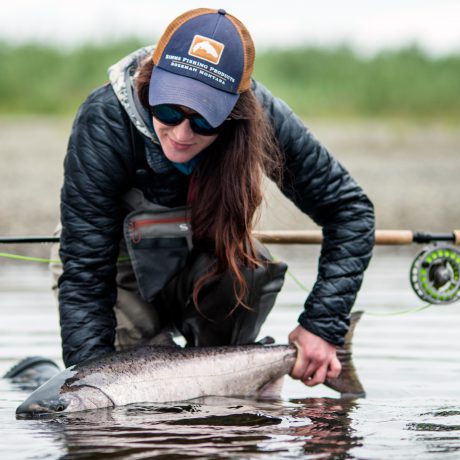
In this week’s Deneki Chronicles, we look at approaching new water. It will always benefit you to test the waters, close and far.
You, like a lot of us, really like using a two-handed rod. Some of us just want to be able to cast as far as we can across the water. Some of us enjoy executing ten different types of Spey casts, and some of us really just want to catch a fish. Regardless of what you enjoy, catching fish on a two-handed rod is the name of the game, especially when you are presented with new water.
We’ve all been there, new water. A stretch of river that you’re not familiar with and have never fished. Or it could be a whole new place…a whole new state…a whole new river. So, when you’re using a two-handed rod, here are two things to measure when you fish water you’ve never fished before, especially with a two-handed rod.
- Test distance- When going through a run for the first time, start casting “short,” then cast “medium” the next run, then cast “long” the next run to get a “feel” for the river. If you’re new to a river or on a new section of the river, always measure up the water you’re fishing. Don’t start by pulling thirty strips to bomb out the longest cast you can. Sometimes the fish are right in front of you.
- Test depth- Fish have eyes, and most of the time, they are looking straight out or up. If your tip is too heavy, your fly is swinging underneath the fish, and they can’t see it. You have no chance of catching that fish. Try different levels of T material ( T-8, T-11, T-14 & T-17) to get a better feel for depth, making sure your fly is in front or above the fish, not underneath it.
Basically, you’re creating a 3D grid across the water and down the water column. If you start by doing this, you’ll have a “good feel” for the river, making for a better understanding of the water, which will help you fish it better.
Other Tips and Tricks:
Leave a Reply